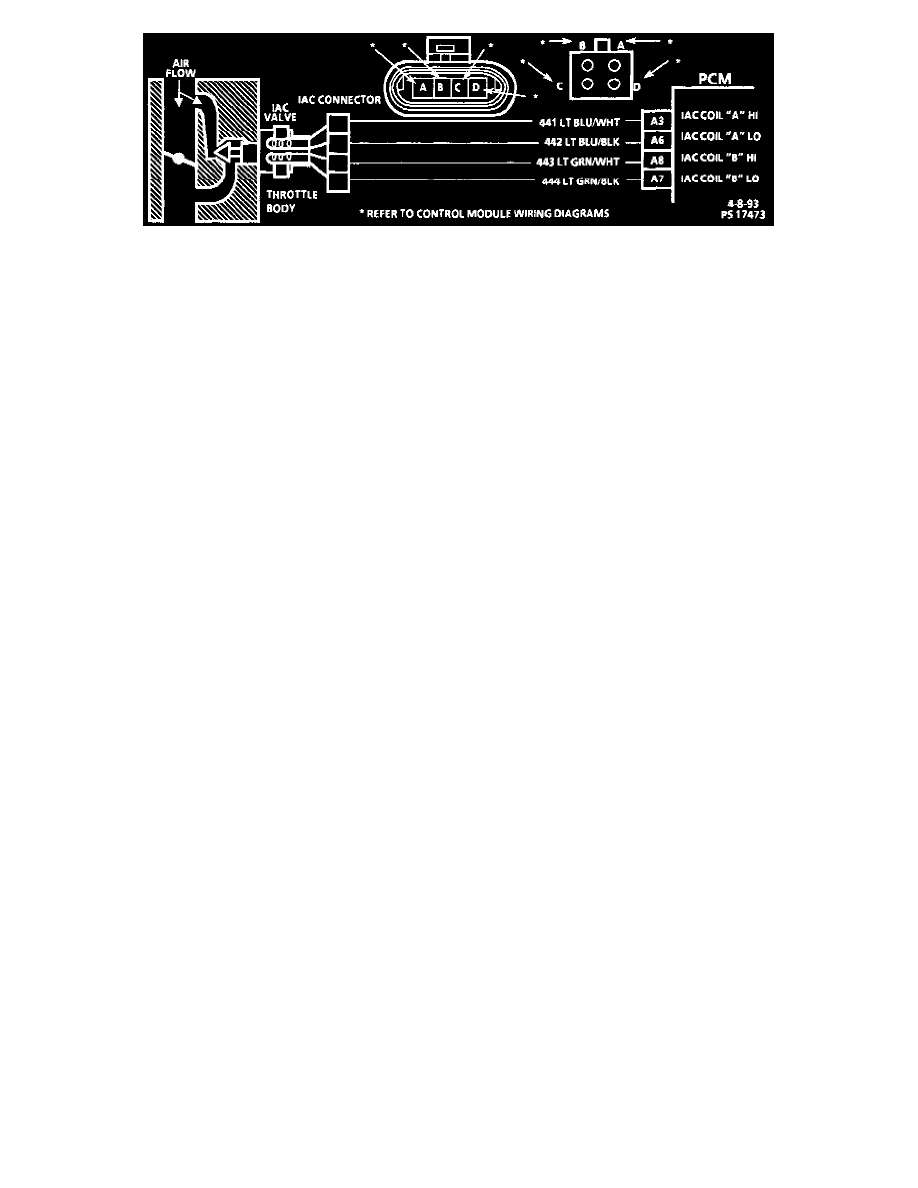S10/T10 Blazer 2WD V6-262 4.3L VIN Z (1994)

Circuit Description
The control module controls engine idle speed with the IAC valve. To increase idle speed, the control module retracts the IAC valve pintle away
from its seat, allowing more air to pass by the throttle bore. To decrease idle speed, it extends the IAC valve pintle towards its seat, reducing bypass
air flow. A Tech 1 scan tool will read the control module commands to the IAC valve in counts. Higher the counts indicate more air bypass (higher
idle). The lower the counts indicate less air is allowed to bypass (lower idle).
Test Description
Number(s) below refer to circled number(s) on the diagnostic chart.
1. The IAC tester is used to extend and retract the IAC valve. Valve movement is verified by an engine speed change. If no change in engine
speed occurs, the valve can be retested when removed from the throttle body.
2. This step checks the quality of the IAC movement in Step 1. Between 700 RPM and about 1500 RPM the engine speed should change
smoothly with each flash of the tester light in both extend and retract. If the IAC valve is retracted beyond the control range (about 1500
RPM), it may take many flashes in the extend position before engine speed will begin to drop. This is normal on certain engines, fully
extending IAC may cause engine stall. This may be normal.
3. Steps 1 and 2 verified proper IAC valve operation while this step checks the IAC circuits. Each lamp on the node light should flash red and
green while the IAC valve is cycled. While the sequence of color is not important if either light is "OFF" or does not flash red and green, check
the circuits for faults beginning with poor terminal contacts.
IAC VALVE RESET PROCEDURE
^ Disconnect battery cable at battery for 10 seconds then reconnect cable.
^ Ignition "ON," engine "OFF" for 5 seconds.
^ Ignition "OFF" for 10 seconds.
Diagnostic Aids
A slow, unstable, or fast idle may be caused by a non-IAC system problem that cannot be overcome by the IAC valve. Out of control range, IAC
Tech 1 scan tool counts will be above 60 if idle is too low, and zero counts if idle is too high. The following checks should be made to repair a
non-IAC system problem.
^ Vacuum Leak (High Idle) - If idle is too high, stop the engine. Fully extend (low) IAC with tester. Start engine. If idle speed is above 800 RPM,
locate and correct vacuum leak including crankcase ventilation system. Also, check for binding of throttle blade or linkage.
^ System Too Rich (Low Air Fuel Ratio) The idle speed will be too low. Tech 1 scan tool IAC counts will usually be above 80. System is obviously
rich and may exhibit black smoke in exhaust. Tech 1 scan tool O2 voltage will be fixed above 800 mV (.8 volt).
Check for high fuel pressure, leaking or sticking injector. Silicone contaminated 02S scan voltage will be slow to respond.
^ Throttle Body - Remove IAC valve and inspect bore for foreign material.
^ IAC Valve Electrical Connections - IAC valve connections should be carefully checked for proper contact.
^ Crankcase Ventilation Valve - An incorrect or faulty crankcase ventilation valve may result in an incorrect idle speed.
Refer to "Rough, Unstable, Incorrect Idle or Stalling".
^ A/C Compressor - Refer to A/C diagnosis if circuit is shorted to ground. If the relay is faulty, an idle problem may exist.
Refer to "Rough, Unstable, Incorrect Idle or Stalling".
^ If intermittent poor driveability or idle symptoms are resolved by disconnecting the IAC, carefully recheck connections, valve terminal resistance
or replace IAC.
